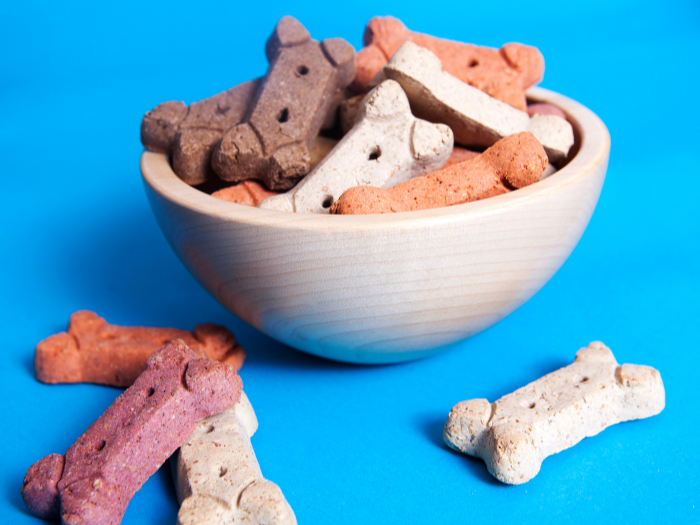
Understanding the Magic of Treat Dispensing Toys for Dogs
Treat dispensing toys have gained popularity among dog owners and enthusiasts for good reason. These innovative toys serve multiple purposes, providing mental stimulation, physical exercise, and a fun way to engage with food or treats. As an experienced industrial designer specializing in dog toys and food dispensers, I have witnessed firsthand the positive impact of treat dispensing toys on dogs’ overall well-being.
Benefits of Treat Dispensing Toys for Dogs
Treat dispensing toys offer a range of benefits that go beyond simple entertainment. Let’s explore some key advantages that make these toys a valuable addition to your dog’s life:
- Mental Stimulation: Dogs are intelligent creatures that require mental challenges to stay happy and engaged. Treat dispensing toys provide a stimulating experience by requiring problem-solving skills to access the hidden treats or food. This mental engagement can help alleviate boredom, reduce destructive behaviors, and promote cognitive development.
- Slow Feeding and Portion Control: For dogs prone to eating too quickly, treat dispensing toys can help regulate their eating pace. The toy dispenses small amounts of food or treats at a time, forcing the dog to work for their reward. This slow feeding process prevents gulping and aids digestion, reducing the risk of choking, vomiting, or other gastrointestinal issues. Additionally, treat dispensing toys can be used as a portion control tool to manage your dog’s weight and prevent overeating.
- Physical Exercise: Treat dispensing toys encourage physical activity and movement. Dogs need regular exercise to maintain a healthy weight, build muscle tone, and release pent-up energy. By engaging with a treat dispensing toy, dogs are motivated to chase, paw, roll, and manipulate the toy, which provides a fun and interactive workout.
- Behavioral Enrichment: Dogs with behavioral issues, such as separation anxiety or excessive barking, can benefit from treat dispensing toys. These toys provide a constructive outlet for energy and anxiety, redirecting their focus and promoting a sense of calmness and relaxation.
Choosing the Right Treat Dispensing Toy
Not all treat dispensing toys are created equal. When selecting a toy for your furry friend, consider the following factors:
- Durability and Safety: Opt for toys made from high-quality, non-toxic materials that can withstand rough play. Avoid toys with small parts that could be a choking hazard.
- Size and Difficulty Level: Choose a toy that is appropriate for your dog’s size and skill level. For beginners, start with simpler designs that are easier to access treats. As your dog becomes more adept, you can introduce more challenging toys.
- Cleaning and Maintenance: Look for toys that are easy to clean and maintain. Removable parts or dishwasher-safe materials can save you time and effort in keeping the toy hygienic.
- Suitable Treat Size: Ensure the toy can accommodate treats or kibble of an appropriate size for your dog. Too small treats may fall out too easily, while oversized treats may make it difficult for your dog to extract them.
Incorporating Treat Dispensing Toys into Your Dog’s Routine
Now that you understand the benefits and considerations, let’s explore some practical tips for incorporating treat dispensing toys into your dog’s routine:
Start Slow and Gradual: Introduce the toy in a calm and controlled environment. Demonstrate how the toy works and encourage your dog to interact with it. Gradually increase the difficulty level as your dog becomes more comfortable and skilled.
Supervise the Playtime: Initially, it’s essential to monitor your dog’s interaction with the toy. This way, you can ensure they are using it safely and not attempting to chew or swallow parts of the toy.
Variety and Rotation: Keep things exciting by rotating different treat dispensing toys. This prevents boredom and maintains your dog’s interest. Additionally, try different types of treats or even use their regular kibble for a more interactive mealtime experience.
Adjust Meal Portions: If you plan to use treat dispensing toys for mealtime, adjust the portion of your dog’s food accordingly. Consult with your veterinarian to determine the appropriate amount of food for your dog’s age, size, and activity level.
Conclusion
Treat dispensing toys for dogs offer a wealth of benefits, from mental stimulation and physical exercise to slower feeding and behavioral enrichment. As an experienced industrial designer in the field of dog toys and food dispensers, I have witnessed the positive impact of these toys on dogs’ overall well-being.
When selecting a treat dispensing toy, prioritize durability, safety, and suitability for your dog’s size and skill level. Introduce the toy gradually and supervise playtime to ensure a positive and engaging experience.
Incorporating treat dispensing toys into your dog’s routine can enhance their mental and physical health while providing interactive and rewarding playtime or mealtime experiences. Embrace the magic of these innovative toys and watch as your dog’s tail wags with joy and satisfaction.
Note: This article is based on the author’s experience as an industrial designer specializing in dog toys and food dispensers. For specific guidance and recommendations, consult with professionals in the field and refer to reputable sources for comprehensive information on dog behavior, health, and well-being.
